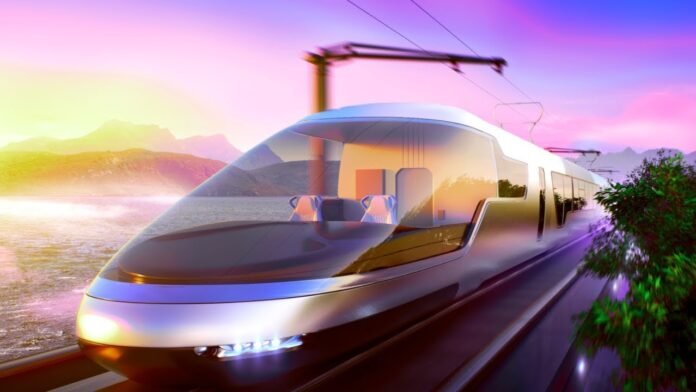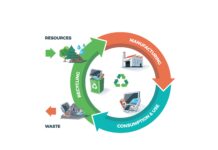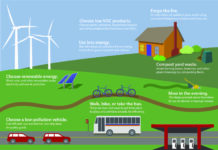In the modern world, transportation has become an indispensable part of our daily lives. However, the negative environmental impact of transportation cannot be ignored, with the burning of fossil fuels by vehicles being a significant contributor to air pollution and greenhouse gas emissions, leading to climate change. However, green transportation options have emerged to address this issue. From electric cars to high-speed trains, there are now more sustainable options available than ever before. In this article, we will explore the latest developments in green transportation and how they are helping to reduce emissions and create a more sustainable future.
The Rise of Electric Cars
Electric cars are one of the most promising developments in green transportation. These vehicles run on electric motors powered by rechargeable batteries, instead of burning gasoline or diesel fuel. By using electricity instead of fossil fuels, electric cars can significantly reduce emissions of greenhouse gases and other pollutants.
Over the past few years, there has been a surge in the popularity of electric cars. Major car manufacturers such as Tesla, Nissan, and Chevrolet have released electric car models, and there are now over 1 million electric vehicles on the roads worldwide. Governments around the world are also offering incentives to encourage people to buy electric cars, such as tax credits, rebates, and access to carpool lanes.
One of the biggest advantages of electric cars is that they have lower operating costs than traditional gas-powered cars. Because electricity is cheaper than gasoline or diesel, electric cars can be cheaper to operate over the long term. Additionally, electric cars have fewer moving parts than traditional cars, meaning that they require less maintenance.
However, the widespread adoption of electric cars also poses some challenges. One of the biggest obstacles is the high cost of electric cars, which can be more expensive than comparable gas-powered cars. In addition, the infrastructure for charging electric cars is still developing, and it can be difficult to find charging stations in some areas. Nevertheless, as technology continues to improve and prices come down, electric cars are likely to become an increasingly popular choice for environmentally conscious drivers.
Hybrid Cars: A Greener Alternative
Another type of green transportation is hybrid cars. These vehicles combine an electric motor with a traditional gasoline engine, allowing them to run on both electricity and gasoline. Hybrid cars are designed to be more fuel-efficient than traditional cars, with the electric motor providing power for short trips and the gas engine kicking in for longer journeys.
Hybrid cars have been on the market for several years now, and they have become increasingly popular as people look for ways to reduce their carbon footprint. In addition to being more fuel-efficient, hybrid cars also produce fewer emissions than traditional cars, making them a more sustainable option.
One of the biggest advantages of hybrid cars is their fuel efficiency. Because they run on both electricity and gasoline, hybrid cars can get significantly better gas mileage than traditional cars. In addition, hybrid cars have regenerative braking systems, which allow them to capture energy from braking and use it to recharge the batteries.
However, hybrid cars also have some drawbacks. They can be more expensive than traditional cars, and they may require more maintenance due to the complexity of their dual powertrains. In addition, while hybrid cars are more fuel-efficient than traditional cars, they still rely on gasoline for some of their power, meaning that they still produce emissions.
High-Speed Trains: The Future of Green Transportation
High-speed trains are another type of green transportation that has become increasingly popular in recent years. These trains are designed to travel at speeds of over 150 miles per hour, making them a fast and efficient way to travel long distances. High-speed trains are powered by electricity, meaning that they produce fewer emissions than traditional trains.
High-speed trains have become particularly popular in Europe and Asia, where they are used to connect cities and countries across the continent. In addition to being a fast and efficient way to travel, high-speed trains also produce fewer emissions than traditional trains, making them a more sustainable option.
One of the biggest advantages of high-speed trains is their speed and efficiency. Because they can travel at speeds of over 150 miles per hour, they can significantly reduce travel time between cities and countries. In addition, high-speed trains are often more comfortable than traditional trains, with amenities such as comfortable seating and on-board dining.
Another advantage of high-speed trains is their environmental sustainability. Because they are powered by electricity, they produce fewer emissions than traditional trains. In addition, high-speed trains can reduce the number of cars on the road, helping to further reduce emissions and traffic congestion.
However, there are also some challenges to the widespread adoption of high-speed trains. One of the biggest obstacles is the high cost of building and maintaining high-speed rail lines. In addition, high-speed trains require a significant amount of energy to operate, meaning that they require a reliable and sustainable source of electricity.
Bike Sharing Programs: An Eco-Friendly Option
Bike sharing programs are another type of green transportation that has become increasingly popular in cities around the world. These programs allow people to rent bicycles for short trips around the city, making it easier to get around without relying on cars or public transportation.
Bike sharing programs have several advantages when it comes to sustainability. First, they produce zero emissions, making them an environmentally friendly option. In addition, they can help to reduce traffic congestion and improve air quality in cities.
Bike sharing programs are also relatively inexpensive, making them an accessible option for people who may not be able to afford a car or public transportation. They are also a healthy option, providing exercise for riders and reducing the risk of obesity and other health problems.
However, there are also some challenges to the widespread adoption of bike sharing programs. One of the biggest obstacles is the need for bike-friendly infrastructure, such as bike lanes and safe places to park bicycles. In addition, bike sharing programs require a significant amount of maintenance, and bikes can be prone to theft and damage.
Conclusion: Green Transportation for a Sustainable Future
Green transportation is becoming an increasingly important part of our efforts to reduce greenhouse gas emissions and create a more sustainable future. From electric cars to high-speed trains to bike sharing programs, there are many innovative and sustainable transportation options available today.
While these technologies are not without their challenges, they offer a promising path forward for reducing our reliance on fossil fuels and creating a more sustainable future. As technology continues to improve and prices come down, it is likely that we will see even more innovative and sustainable transportation options in the years to come. It is up to us to make the right choices when it comes to transportation, so that we can protect the environment and ensure a better future for generations to come.
Google News | Telegram
















